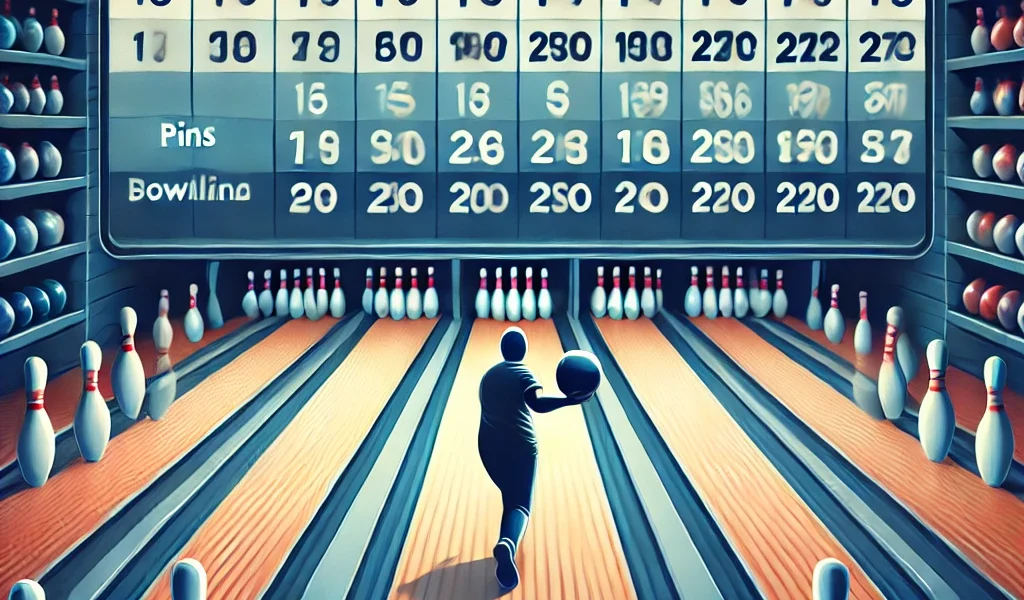Bowling is a popular sport enjoyed by millions of people worldwide, and understanding your performance is key to improving your game. One common measure of skill in bowling is the bowling average. But what exactly constitutes a “good” bowling average? Let’s explore the factors that influence this score and what it means for different skill levels.
What is a Bowling Average?
A bowling average is calculated by taking the total score from all games bowled and dividing it by the number of games played. For instance, if you bowl three games and your scores are 150, 170, and 180, your average would be (150 + 170 + 180) ÷ 3 = 166.67.
Understanding Bowling Scores
Before diving into what makes a good average, it’s essential to understand how bowling is scored. In a typical game, a bowler can score between 0 and 300 points. A perfect score of 300 is achieved by rolling 12 consecutive strikes (knocking down all 10 pins on each throw). While this is the dream of many bowlers, it’s incredibly rare and requires years of practice and precision.
What is Considered a Good Bowling Average?
The definition of a “good” bowling average varies depending on the player’s experience, skill level, and the type of bowling they play. Here’s a breakdown of what different averages typically mean:
- Beginner (Average Below 100)
For beginners, a bowling average below 100 is typical. New bowlers are still learning to control the ball, aim at pins accurately, and develop their technique. If you’re just starting, focus on improving your form rather than worrying about the score. - Casual Player (Average Between 100-150)
For casual bowlers who play occasionally, an average between 100 and 150 is quite respectable. This range indicates that the player can consistently knock down pins and has a reasonable understanding of the game. - Intermediate Player (Average Between 150-200)
Players with an average between 150 and 200 are typically more experienced and may bowl more regularly. They understand ball placement, technique, and how to adjust for different lane conditions. An average in this range is considered quite good for recreational bowlers. - Advanced Player (Average Between 200-220)
Advanced bowlers with averages between 200 and 220 are likely competing in leagues or tournaments. They have mastered their technique, understand oil patterns, and can adjust their approach for various conditions. At this level, bowlers often aim to fine-tune their skills to achieve higher consistency. - Professional (Average Above 220)
Professional bowlers often maintain averages above 220, and it’s not uncommon for them to approach or surpass 240. These bowlers have years of experience, top-notch equipment, and often compete at the highest levels. A professional-level average requires deep knowledge of the sport, flawless technique, and exceptional focus.
Factors Affecting Bowling Averages
Several factors can influence a player’s bowling average. Understanding these can help you better assess your performance:
- Skill and Technique
As with any sport, technique plays a vital role in your performance. From footwork to ball release, mastering each aspect of the game will result in better scores and a higher average. - Equipment
The type of bowling ball you use, its weight, and how well it suits your playing style can impact your score. Professional bowlers often use custom-made balls designed for specific lane conditions. - Lane Conditions
Lane oil patterns can greatly affect how the ball moves, and more experienced players can adjust their technique accordingly. Bowling on a dry lane versus a heavily oiled lane will require different approaches. - Consistency
Consistency is key to maintaining a good average. Bowling a high game occasionally won’t help your average if it’s followed by several lower-scoring games. Developing a reliable form and routine will lead to more consistent scores. - Mental Game
Bowling is as much a mental sport as it is physical. Staying focused and managing pressure, especially in competitive environments, can make the difference between a mediocre game and a high-scoring one.
How to Improve Your Bowling Average
If you’re looking to raise your bowling average, consider the following tips:
- Practice Regularly
The more you practice, the better your technique will become. Consistent practice helps you fine-tune your approach, release, and aim. - Work on Your Form
Focus on your stance, approach, and follow-through. Small adjustments in these areas can lead to significant improvements in your scores. - Study Lane Conditions
Learning to read oil patterns and adjusting your game accordingly will help you avoid mistakes and make the most of each frame. - Use the Right Equipment
Make sure your ball fits your hand comfortably and suits the lane conditions you’re playing on. Custom-fit bowling balls can make a significant difference in performance. - Focus on Spare Shooting
While strikes are ideal, picking up spares consistently is crucial to maintaining a high average. Focus on accurately hitting your spare shots to keep your scores high.
Conclusion
In bowling, what constitutes a good average depends on your skill level, goals, and experience. For beginners, an average of 100 is a great start, while more experienced players aim for averages of 150 and beyond. Whether you’re a casual player or an aspiring professional, remember that bowling is a sport of improvement. Focus on your technique, practice consistently, and enjoy the process of becoming a better bowler. With dedication and patience, you’ll see your average rise over time.




